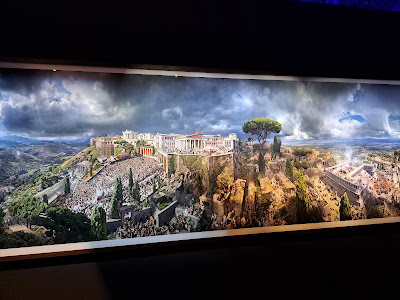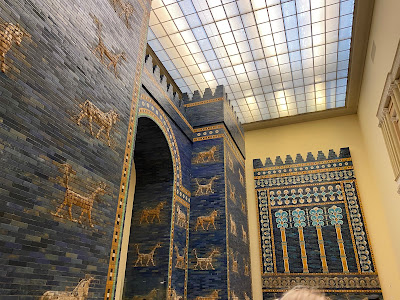Pergamon Museum

Introduction
The Pergamon Museum, located on Berlin’s Museum Island in Germany, is one of the most visited museums in the country and a true gem for history and archaeology enthusiasts. Renowned for its breathtaking reconstructions of ancient architectural marvels, the Pergamon Museum offers a fascinating journey through the ancient world. From monumental gateways to intricate artifacts, visitors can immerse themselves in rich cultural treasures from across the globe.
Whether you are passionate about ancient civilizations, fascinated by archaeological wonders, or simply eager to explore one of Berlin’s top cultural destinations, the Pergamon Museum offers an unforgettable experience. Its remarkable exhibits provide a glimpse into the artistic and architectural achievements of ancient societies, making it a must-see for visitors exploring the vibrant city of Berlin.


About the Museum
The Pergamon Museum was designed by Alfred Messel and constructed between 1910 and 1930 to house the impressive collection of artifacts discovered during German archaeological expeditions. The museum is divided into three distinct sections: the Collection of Classical Antiquities, the Museum of the Ancient Near East, and the Museum of Islamic Art.
One of the most iconic exhibits at the Pergamon Museum is the Pergamon Altar, an extraordinary reconstruction of a massive Hellenistic structure originally built in the ancient Greek city of Pergamon. The altar’s intricate friezes depicting the battle between the gods and giants are a highlight of the museum.
Another unforgettable feature is the Ishtar Gate, a magnificent reconstruction of the ancient entrance to the city of Babylon. This vibrant blue-tiled gate, adorned with images of dragons and bulls, offers a powerful glimpse into the grandeur of Babylonian civilization.
The Museum of the Ancient Near East showcases artifacts from Mesopotamia, Assyria, and Anatolia, offering insights into the art, culture, and daily life of these ancient societies. Meanwhile, the Museum of Islamic Art presents exquisite carpets, ceramics, and architectural elements from Islamic cultures spanning several centuries.
The Pergamon Museum’s impressive reconstructions transport visitors back in time, providing a deeper understanding of the artistic and cultural achievements of some of the world’s most influential civilizations.
Interesting Facts
- The Pergamon Museum is part of Berlin’s Museum Island, a UNESCO World Heritage Site.
- The Pergamon Altar dates back to the 2nd century BCE and is considered one of the most significant surviving examples of Hellenistic art.
- The Ishtar Gate, reconstructed using original materials from ancient Babylon, was once one of the Seven Wonders of the Ancient World.
- The Museum of Islamic Art includes intricate mosaics from the Umayyad Palace of Mshatta in Jordan.
- The Pergamon Museum attracts over one million visitors each year, making it one of the most popular museums in Germany.
- The museum’s impressive exhibits are the result of extensive archaeological excavations conducted by German researchers in the early 20th century.
Photo Gallery






Physical Location
Contact Details
Phone: +49 30 2664 24242
Website: smb.museum/en/museums-institutions/pergamonmuseum/home
Facebook: facebook.com/pergamonmuseum
Conclusion
The Pergamon Museum offers an extraordinary journey through the wonders of the ancient world. With its awe-inspiring reconstructions, remarkable artifacts, and rich historical narratives, the museum invites visitors to connect with civilizations that have shaped human history. Whether you are exploring the towering Pergamon Altar, marveling at the vibrant Ishtar Gate, or discovering intricate Islamic art, the Pergamon Museum delivers a truly unforgettable experience. For anyone visiting Berlin, this iconic museum stands as a powerful reminder of the ingenuity and creativity of past cultures — a must-see destination for history lovers and curious explorers alike.




